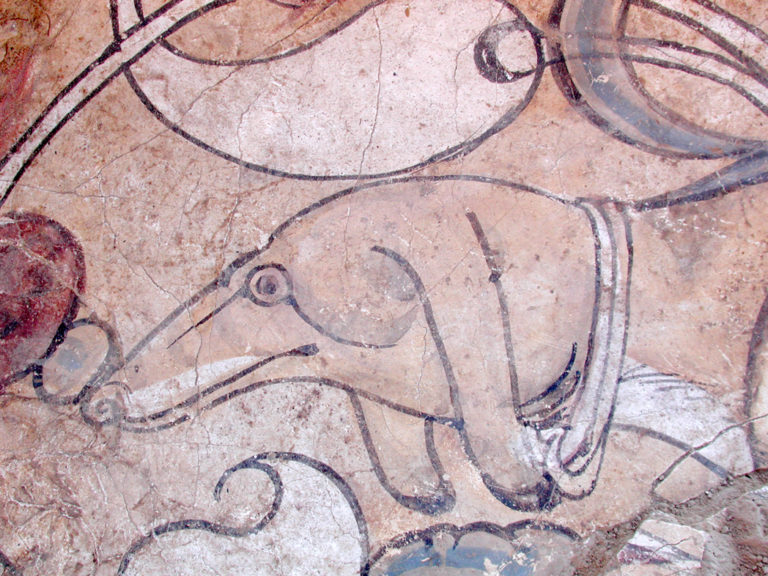
Detail of a Karakhanid mural painting in Samarkand
Conference by Yury KAREV
UMR 8546, CNRS-ENS, Archéologies d’Orient et d’Occident et textes anciens (AOROC)
Our very limited knowledge of the monumental figurative art of the pre-mongol time (8th-early 13th century) in the eastern parts of the Islamic world (northeast of Iran, Afghanistan and the former Soviet Central Asian Republics) have been greatly enhanced since the discovery in 2001, on the lower terrace of the Citadel of the ancient city of Samarkand (Afrasiab site), of a princely residence decorated with mural paintings of remarkable quality. The excavations carried out between 2001-2004 in the context of the activities of the archaeological Franco-Uzbek Mission in Samarkand have revealed more than 700 painted fragments scattered on the floor of a large square Pavilion (12x12m), destroyed at the beginning of the 13th century.
Despite the very poor state of conservation of the paintings, the meticulous work of the team of conservators of the Institute of Archaeology in Samarkand allowed to highlight the key elements of a vast art project in the second half of the 12th century-early 13th c. The main building of one of the rulers of the Turkish dynasty of the Karakhanids, masters of the Transoxania/Mâwarâ ‘ annahr at that time, was decorated with paintings representing various aspects of the culture of the Court from a throne scene to poetic texts in Persian. These images correspond perfectly to the location of the building in the Citadel,-the seat of power in Samarkand.
The latest results of the restoration work, the study of the paintings in their historical and cultural context are at the heart of our presentation.

